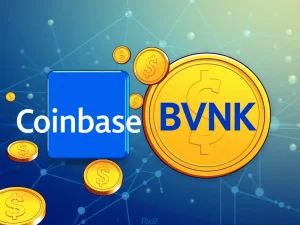Polygon Finality Faces Critical Disruption: Node Bug Impacts RPC Services

The **Polygon Network**, a prominent Layer 2 scaling solution for Ethereum, recently encountered a significant technical challenge. A temporary **finality disruption** briefly impacted its operations. This event, while swiftly addressed, underscores the intricate nature of blockchain infrastructure. It also highlights the constant need for vigilance in decentralized systems. Many users and developers closely monitored the situation as it unfolded.
Understanding the **Polygon Finality** Disruption
On Wednesday, the **Polygon Network** experienced an unexpected delay in its consensus finality. This critical issue originated from a specific **node bug**. The bug affected the Bor and Erigon clients, both essential components for Polygon’s operational integrity. Consensus finality refers to the irreversible confirmation of transactions on a blockchain. When finality is delayed, transactions are processed but not yet fully confirmed as permanent. While the network continued to produce blocks, this disruption created temporary uncertainty. It impacted several key services across the ecosystem. This presented various challenges for dApps and their users.
The incident began early Wednesday. It immediately triggered an official incident report on Polygon’s status page. The core problem was identified as a bug preventing node progress for certain configurations. The Polygon team quickly mobilized. They worked to diagnose and mitigate the issue. Their prompt response was crucial in containing the impact. The team assured users that core chain operations remained unaffected. They also pledged a swift recovery.
The Ripple Effect: How **RPC Services** and Validators Were Impacted
The **node bug** had direct and noticeable consequences for **RPC services**. Remote Procedure Call (RPC) services are vital interfaces. They enable decentralized applications (dApps) and users to interact with the blockchain. Many applications built on Polygon rely heavily on these services. Consequently, users encountered temporary access issues. They faced difficulties in performing transactions or retrieving data. This interruption affected the smooth functioning of various dApps.
Furthermore, validator syncing also suffered. Validators play a fundamental role in securing the **Polygon Network**. They verify transactions and add new blocks to the chain. Due to the bug, some RPC providers and validators faced a difficult choice. They were forced to rewind their systems. They then had to resynchronize to the last finalized block. This labor-intensive process ensured data integrity. It also helped to restore full service gradually. The Polygon team actively collaborated with infrastructure providers. They aimed to accelerate debugging efforts. Their goal was to restore full functionality across the network.
Polygon’s Swift Response to the **Node Bug**
Upon identifying the **node bug**, the Polygon team initiated immediate action. Their incident report provided real-time updates to the community. This transparency was vital for maintaining trust. Engineers quickly began collaborating with various infrastructure providers. They sought to pinpoint the exact cause of the problem. They also worked on implementing effective solutions.
The team soon discovered a simple yet effective workaround. Restarting the affected nodes proved beneficial for many participants. Polygon stated, “We see that a restart of nodes has fixed the issues for many validators and RPC providers.” This action helped restore service for numerous validators. It also brought many **RPC services** back online. This rapid response minimized the overall duration of the **blockchain disruption**. It demonstrated the team’s commitment to network stability. They worked tirelessly to ensure a complete resolution.
Understanding Bor and Erigon: Core to the **Polygon Network**
To fully grasp the incident, understanding Bor and Erigon is essential. Bor functions as Polygon’s block producer client. It is responsible for creating new blocks and adding them to the chain. Erigon is an Ethereum client that has been adapted for use within the Polygon ecosystem. Both components are critical for maintaining the network’s consensus and operational flow. Their proper functioning ensures consistent transaction processing. A bug within these clients can therefore directly impact core network capabilities. It can lead to issues like the recent **finality disruption**. The reliance on such intricate software highlights the ongoing development challenges. It also shows the continuous need for rigorous testing in blockchain technology.
The incident serves as a reminder of the complexities inherent in decentralized systems. Even robust networks can encounter unforeseen software glitches. The prompt identification and resolution of this **node bug** prevented a more widespread issue. It showcased the expertise of the Polygon development team. They navigated a challenging technical problem with efficiency. This commitment to problem-solving reinforces confidence in the **Polygon Network**.
Broader Implications of **Blockchain Disruption**
Incidents like Polygon’s temporary **finality disruption** offer valuable insights. They highlight the importance of network stability and resilience in the blockchain space. Users and developers depend on consistent and reliable performance. A **blockchain disruption**, even a temporary one, can affect trust. It can also impact the user experience. However, how a network responds to such challenges is equally important. Polygon’s transparent communication and swift resolution strategy are positive indicators. They demonstrate a mature approach to incident management.
Such events are not unique to Polygon. Many blockchain networks, regardless of their size, face technical hurdles. These challenges often lead to critical improvements. They also drive innovation in network architecture and monitoring. The ability to quickly identify, isolate, and resolve issues is paramount. It ensures the long-term viability and adoption of decentralized technologies. Ultimately, these incidents test the strength of the entire ecosystem. They reinforce the need for robust decentralized infrastructure.
Lessons Learned and Future Resilience for the **Polygon Network**
The recent **finality disruption** on **Polygon** provided important lessons. It underscored the continuous need for system enhancements. The team’s prompt actions mitigated broader issues. They continue to collaborate with the wider community. Their efforts focus on strengthening network stability. Future updates will likely include proactive measures. These aim to prevent similar **node bug** incidents. This commitment extends to refining client software. It also involves enhancing monitoring systems.
Furthermore, ensuring robust **RPC services** remains a top priority. This guarantees a seamless and reliable user experience for all participants. The Polygon ecosystem continues its rapid expansion. Its developers are deeply committed to building a secure future. This dedication reinforces confidence in the platform’s long-term vision. The incident ultimately demonstrated the network’s ability to adapt and recover effectively. It reinforces Polygon’s position as a resilient Layer 2 solution in the evolving crypto landscape.







